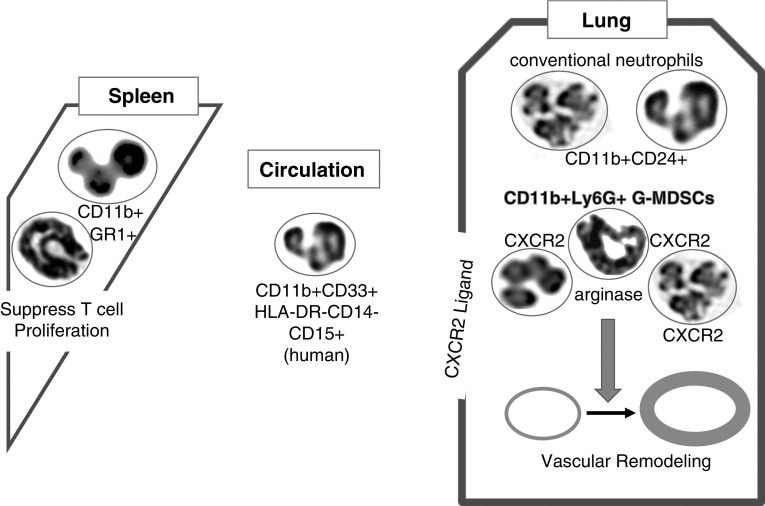Figure 1.
Polymorphonuclear leukocytes are not always what they appear to be. Bryant and colleagues (1) show that granulocytic myeloid-derived suppressor cells (G-MDSCs) migrate into the lungs via C-X-C motif chemokine receptor 2 (CXCR2) signaling. The cells are attracted by ligands for CXCR2 that are expressed in the lungs of animals challenged with bleomycin and subjected to macrophage depletion. The G-MDSCs produce arginase-1 and induce pulmonary arterial remodeling and increases in right ventricular systolic pressure. MDSCs isolated from the spleens of the same animals inhibit T cell proliferation. The numbers of G-MDSCs are increased in the circulation of patients with interstitial pulmonary fibrosis. The authors used state-of-the-art flow-cytometric markers (8) to identify the G-MDSCs. These findings are interesting given that human (18) and mouse (19) G-MDSCs have a microscopic morphology that resembles polymorphonuclear neutrophils. Further, the mouse GR1 marker (20) has been extensively used to characterize the activity of neutrophils (17,000 results in Google Scholar) and recognizes Ly-6G and Ly-6C, which are markers for mouse G-MDSCs and monocytic MDSCs, respectively (8). HLA-DR = human leukocyte antigen-antigen D related; Ly6G = lymphocyte antigen 6 complex locus G6D.

